-
 Bitcoin
Bitcoin $116400
-1.69% -
 Ethereum
Ethereum $3731
2.87% -
 XRP
XRP $3.119
-1.00% -
 Tether USDt
Tether USDt $1.000
-0.04% -
 BNB
BNB $774.0
1.01% -
 Solana
Solana $181.0
-2.25% -
 USDC
USDC $1.000
0.02% -
 Dogecoin
Dogecoin $0.2314
-2.16% -
 TRON
TRON $0.3145
1.76% -
 Cardano
Cardano $0.8087
0.22% -
 Hyperliquid
Hyperliquid $43.01
0.68% -
 Stellar
Stellar $0.4247
-0.93% -
 Sui
Sui $3.758
1.42% -
 Chainlink
Chainlink $18.30
1.99% -
 Bitcoin Cash
Bitcoin Cash $551.4
5.66% -
 Hedera
Hedera $0.2482
3.08% -
 Avalanche
Avalanche $23.70
0.18% -
 Litecoin
Litecoin $115.1
2.44% -
 UNUS SED LEO
UNUS SED LEO $8.972
-0.36% -
 Shiba Inu
Shiba Inu $0.00001370
0.73% -
 Toncoin
Toncoin $3.146
0.74% -
 Ethena USDe
Ethena USDe $1.001
-0.03% -
 Uniswap
Uniswap $10.49
3.95% -
 Polkadot
Polkadot $4.044
1.42% -
 Monero
Monero $328.9
2.43% -
 Dai
Dai $0.9998
-0.03% -
 Bitget Token
Bitget Token $4.510
-1.10% -
 Pepe
Pepe $0.00001231
-1.68% -
 Aave
Aave $293.4
2.16% -
 Cronos
Cronos $0.1294
2.89%
The daily moving average is arranged in a bullish pattern and the low absorption position of the 10-day line is retraced for the first time
A bullish moving average pattern, where shorter-term MAs rise above longer-term ones, signals strong upward momentum and potential continuation, especially when confirmed by volume and a first retest of the 10-day MA.
Jul 24, 2025 at 08:14 am
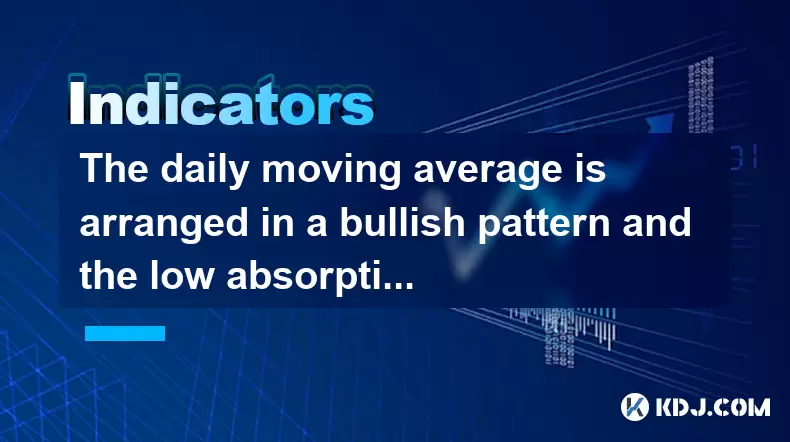
Understanding the Bullish Moving Average Pattern
When the daily moving average lines are arranged in a bullish pattern, it indicates a strong upward momentum in the price trend of a cryptocurrency. This configuration typically involves shorter-term moving averages crossing above longer-term ones, such as the 10-day moving average (MA) rising above the 20-day or 50-day MA. The alignment reflects increasing investor confidence and sustained buying pressure. In technical analysis, this formation is often referred to as a "golden cross" when it occurs between the 50-day and 200-day MAs, but similar logic applies to shorter timeframes. The bullish arrangement signals that recent price action is outpacing historical averages, suggesting continued upward movement if volume supports the trend.
Significance of the 10-Day Moving Average as a Support Level
The 10-day moving average is a critical short-term benchmark used by traders to assess momentum and identify potential entry or exit points. When price retraces to touch or slightly dip below this line after a bullish move, it tests whether the level holds as dynamic support. A successful retest—where price bounces off the 10-day MA—confirms that buyers are still active at that level. This behavior is commonly observed in healthy uptrends within the cryptocurrency market, where pullbacks are absorbed by accumulating buyers. The term low absorption position refers to a scenario where selling pressure diminishes near the moving average, and demand increases, preventing further downside.
How to Identify a First-Time Retracement to the 10-Day MA
To determine if the current price action represents the first retracement to the 10-day MA after a bullish pattern forms, follow these steps:
- Plot the 10-day, 20-day, and 50-day simple moving averages (SMA) on a daily candlestick chart of the cryptocurrency.
- Confirm that the 10-day MA is positioned above both the 20-day and 50-day MAs, establishing a bullish stack.
- Observe the price trajectory after the crossover: it should show a clear upward move without prior dips touching the 10-day line.
- Monitor for the first instance where price pulls back and approaches the 10-day MA with decreasing volume.
- Check for bullish candlestick patterns such as hammer, bullish engulfing, or morning star near the 10-day line.
- Validate with on-balance volume (OBV) or volume-weighted average price (VWAP) to ensure accumulation is occurring.
This retracement is meaningful only if it's the initial return to the 10-day MA after the bullish alignment. Subsequent touches may carry less significance due to repeated testing.
Practical Trading Strategy Using the 10-Day MA Retest
Traders can use the first retest of the 10-day moving average in a bullish setup as a strategic entry opportunity. The key is to avoid premature entries before confirmation. Here’s how to execute this strategy: - Wait for the price to approach the 10-day MA with narrowing candle ranges, indicating reduced selling momentum.
- Look for a closing price above the 10-day MA on a daily basis to confirm support hold.
- Place a buy order slightly above the high of the candle that bounces from the MA.
- Set a stop-loss just below the lowest point of the retesting candle or below the 10-day MA value at that point.
- Use a risk-reward ratio of at least 1:2 by projecting upside based on the prior rally’s height.
- Confirm with RSI (Relative Strength Index) not being in overbought territory (below 70) to allow room for continuation.
This method works best in high-liquidity cryptocurrencies like Bitcoin (BTC) or Ethereum (ETH), where moving averages are more reliable due to consistent trading volume. Altcoins with low volume may produce false signals.
Volume Confirmation During the Absorption Phase
Volume plays a crucial role in validating the low absorption position near the 10-day MA. During the retracement, observe the volume profile across daily candles: - Declining volume during the pullback suggests lack of aggressive selling.
- A sharp increase in volume on the bounce indicates institutional or whale participation.
- Compare current volume to the 10-day average volume; a surge above average strengthens the signal.
- Use volume by price (VBP) indicators to identify high-volume nodes near the 10-day MA.
- Avoid acting on retracements accompanied by high volume sell-offs, as they may indicate distribution.
In markets like cryptocurrency, where sentiment shifts rapidly, volume confirmation helps distinguish between a healthy correction and a potential trend reversal.
Common Misinterpretations and How to Avoid Them
Many traders misread the first retracement signal due to improper chart settings or premature assumptions. To avoid pitfalls: - Ensure the moving averages are calculated using closing prices and not typical price or weighted variants.
- Do not confuse intraday wicks touching the 10-day MA with a valid close below or above it.
- Avoid using exponential moving averages (EMA) interchangeably with SMA unless your strategy specifically calls for it.
- Disregard retracements that occur during major news events or exchange outages, as they distort price action.
- Cross-check with higher timeframes (e.g., weekly chart) to confirm the broader trend aligns with the daily bullish pattern.
Mislabeling a second or third retest as the first can lead to false entries, so meticulous chart history review is essential.
Frequently Asked Questions
Q: Can the 10-day MA retest strategy be applied to altcoins with low market capitalization?
While possible, the reliability decreases significantly in low-cap altcoins due to low liquidity and high volatility. These assets often experience erratic price swings that can fake out moving average bounces. If applying this strategy, increase the confirmation criteria—require stronger volume spikes and multi-indicator alignment such as MACD turning positive and funding rates remaining neutral.Q: What time frame should I use to monitor the retest after identifying the bullish MA pattern?
The daily chart is primary for identifying the pattern, but switching to the 4-hour chart during the retest phase allows finer entry timing. Watch for bullish reversal patterns on the 4-hour candles near the daily 10-day MA level. Avoid using timeframes below 1-hour, as noise dominates signal in crypto markets.Q: How do I adjust the strategy if the price briefly closes below the 10-day MA but recovers the same day?
A single candle closing below the 10-day MA isn’t necessarily a breakdown if the next candle closes above it with strong volume. This can be a "shakeout" move where weak hands are flushed before continuation. Treat it as a valid retest if the weekly trend remains bullish and no bearish divergence appears on RSI.Q: Is there a difference between simple and exponential moving averages in this context?
Yes. The exponential moving average (EMA) gives more weight to recent prices, making it more responsive to short-term changes. In fast-moving crypto markets, EMAs may show earlier crossovers and retests. However, SMAs provide smoother, less noisy signals. Traders preferring conservative entries often use SMAs, while scalpers may opt for EMAs. Consistency in choice is key.
Disclaimer:info@kdj.com
The information provided is not trading advice. kdj.com does not assume any responsibility for any investments made based on the information provided in this article. Cryptocurrencies are highly volatile and it is highly recommended that you invest with caution after thorough research!
If you believe that the content used on this website infringes your copyright, please contact us immediately (info@kdj.com) and we will delete it promptly.
- Pump, Bonk, Buyback: A Wild Ride in Crypto Town!
- 2025-07-25 19:10:12
- Punisher Coin, Dogecoin, Shiba Inu: Meme Coin Mania in the 2025 Crypto Landscape
- 2025-07-25 19:10:12
- Celestia's Token Control: Buyback & Staking Overhaul in Focus
- 2025-07-25 19:50:11
- Altcoins, Bitcoin, and Crypto Coins: What's Hot in the NYC Crypto Scene?
- 2025-07-25 19:55:52
- Litecoin Price Breakout Imminent? Rally Potential Explored!
- 2025-07-25 17:30:12
- Ether ETFs Surge, Bitcoin Wobbles: Is an ETH Breakout Imminent?
- 2025-07-25 16:50:12
Related knowledge

How to interpret that the KDJ D line is downward for a long time but the price is sideways?
Jul 25,2025 at 07:00pm
Understanding the KDJ Indicator and Its ComponentsThe KDJ indicator is a momentum oscillator widely used in cryptocurrency trading to assess overbough...

What does it mean that the KDJ indicator forms a double bottom at a low level?
Jul 25,2025 at 05:08pm
Understanding the KDJ Indicator in Cryptocurrency TradingThe KDJ indicator is a momentum oscillator widely used in cryptocurrency trading to identify ...
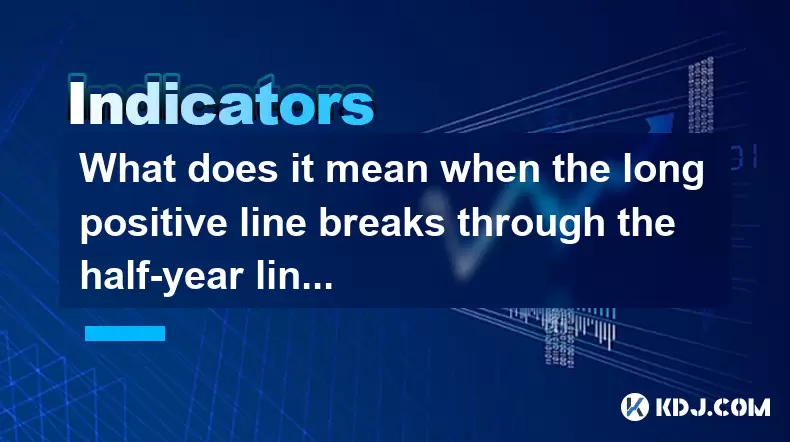
What does it mean when the long positive line breaks through the half-year line and then steps back?
Jul 25,2025 at 06:49pm
Understanding the Long Positive Line in Candlestick ChartsIn the world of cryptocurrency trading, candlestick patterns play a vital role in technical ...
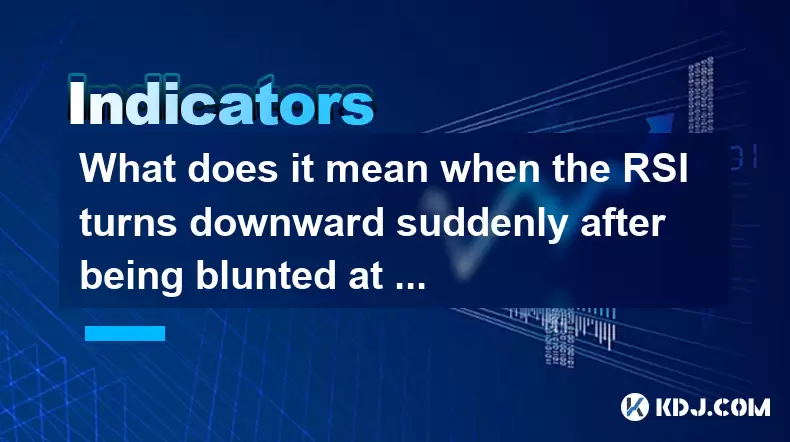
What does it mean when the RSI turns downward suddenly after being blunted at a high level?
Jul 25,2025 at 04:00pm
Understanding the RSI and Its Role in Technical AnalysisThe Relative Strength Index (RSI) is a momentum oscillator that measures the speed and change ...
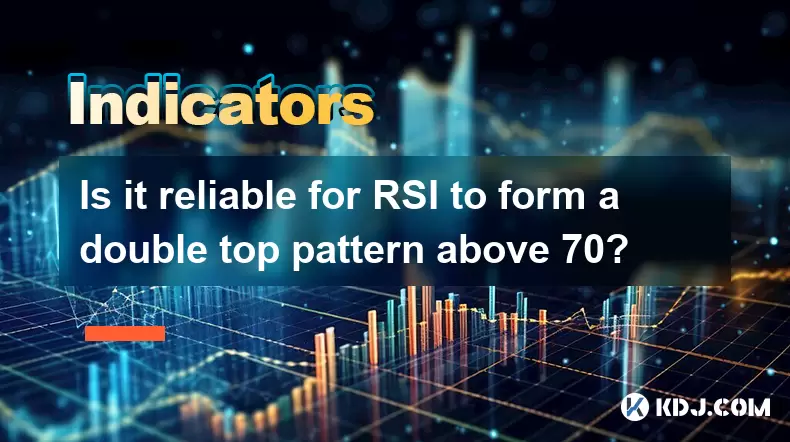
Is it reliable for RSI to form a double top pattern above 70?
Jul 25,2025 at 04:49pm
Understanding the RSI Indicator and Its Role in Technical AnalysisThe Relative Strength Index (RSI) is a momentum oscillator that measures the speed a...
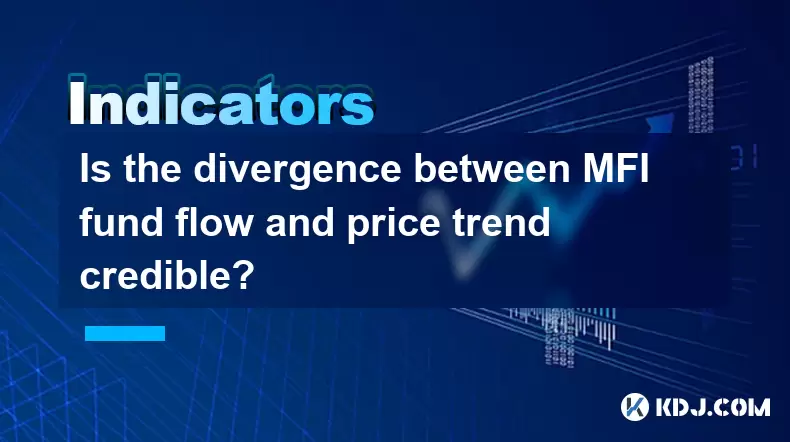
Is the divergence between MFI fund flow and price trend credible?
Jul 25,2025 at 12:01pm
Understanding MFI and Fund Flow in Cryptocurrency MarketsThe Money Flow Index (MFI) is a technical oscillator that combines price and volume to assess...

How to interpret that the KDJ D line is downward for a long time but the price is sideways?
Jul 25,2025 at 07:00pm
Understanding the KDJ Indicator and Its ComponentsThe KDJ indicator is a momentum oscillator widely used in cryptocurrency trading to assess overbough...

What does it mean that the KDJ indicator forms a double bottom at a low level?
Jul 25,2025 at 05:08pm
Understanding the KDJ Indicator in Cryptocurrency TradingThe KDJ indicator is a momentum oscillator widely used in cryptocurrency trading to identify ...

What does it mean when the long positive line breaks through the half-year line and then steps back?
Jul 25,2025 at 06:49pm
Understanding the Long Positive Line in Candlestick ChartsIn the world of cryptocurrency trading, candlestick patterns play a vital role in technical ...

What does it mean when the RSI turns downward suddenly after being blunted at a high level?
Jul 25,2025 at 04:00pm
Understanding the RSI and Its Role in Technical AnalysisThe Relative Strength Index (RSI) is a momentum oscillator that measures the speed and change ...

Is it reliable for RSI to form a double top pattern above 70?
Jul 25,2025 at 04:49pm
Understanding the RSI Indicator and Its Role in Technical AnalysisThe Relative Strength Index (RSI) is a momentum oscillator that measures the speed a...

Is the divergence between MFI fund flow and price trend credible?
Jul 25,2025 at 12:01pm
Understanding MFI and Fund Flow in Cryptocurrency MarketsThe Money Flow Index (MFI) is a technical oscillator that combines price and volume to assess...
See all articles

























































































